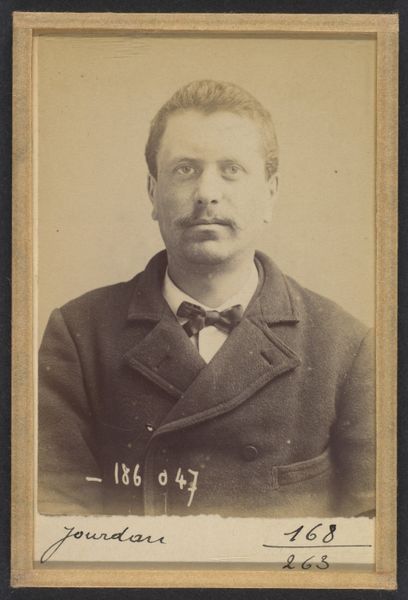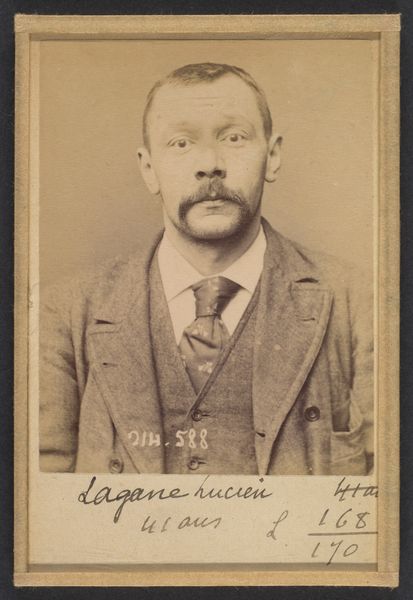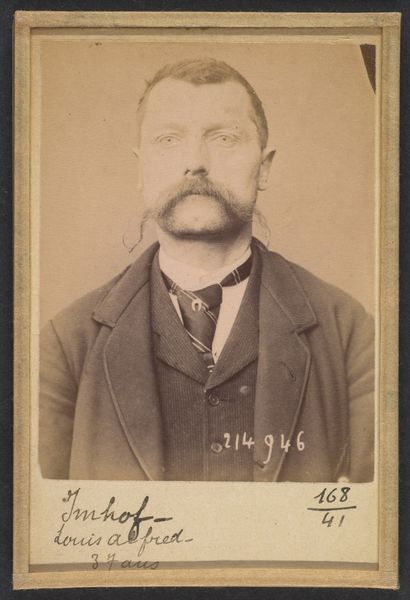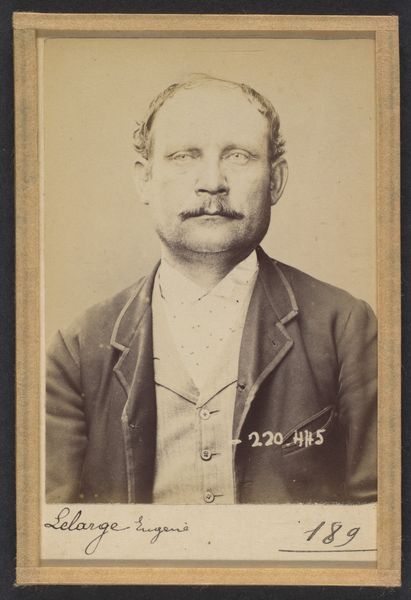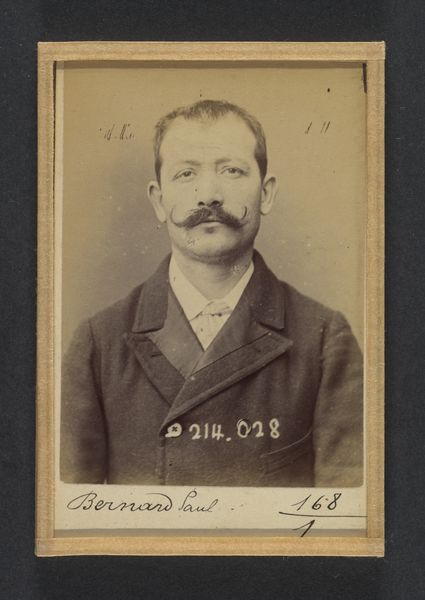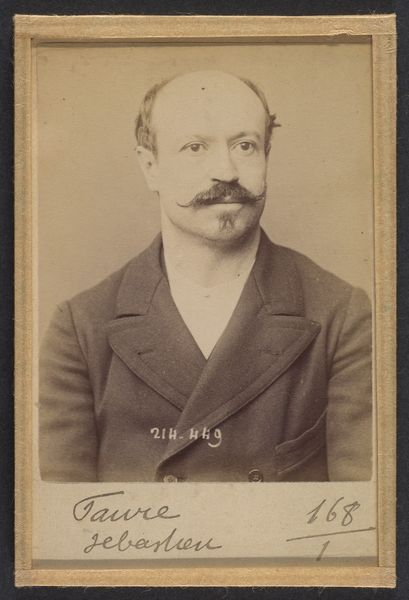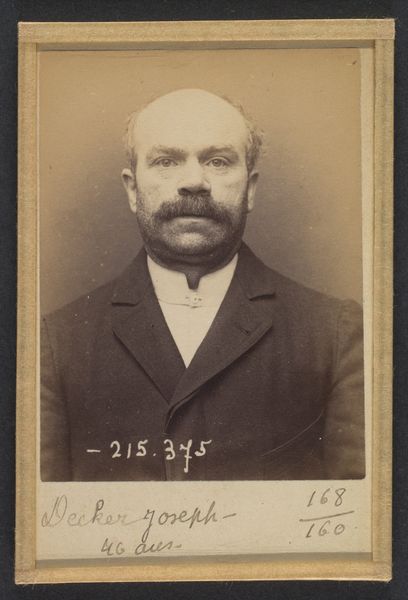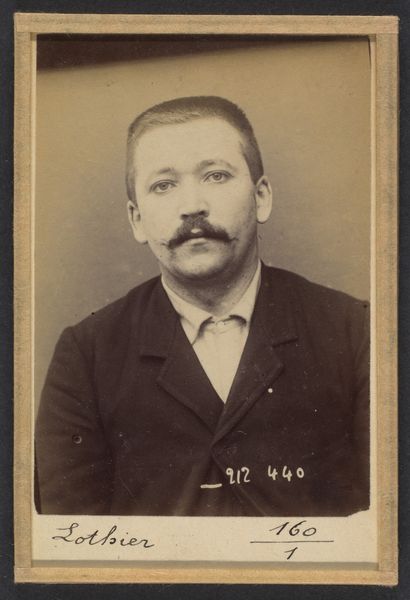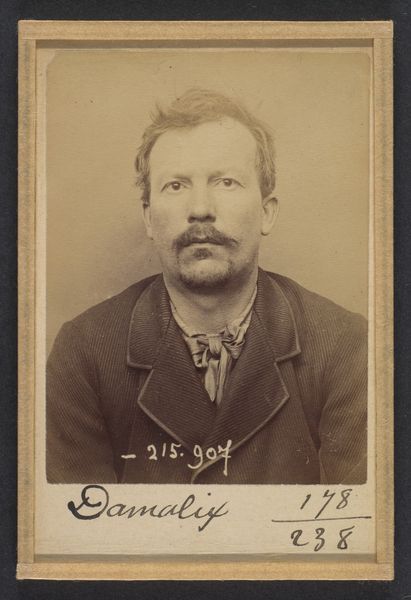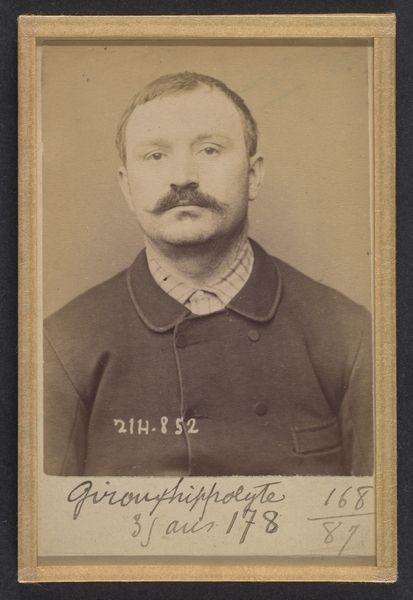
Della Casa. 36 ans, né le 1/3/58 à Avoglion (Italie). Cordonnier. Anarchiste. 2/7/94. 1894
0:00
0:00
print, photography, gelatin-silver-print
#
portrait
#
african-art
# print
#
photography
#
gelatin-silver-print
#
portrait art
#
realism
#
poster
Dimensions: 10.5 x 7 x 0.5 cm (4 1/8 x 2 3/4 x 3/16 in.) each
Copyright: Public Domain
Curator: I see such an intriguing face staring back at me—a mix of defiance and… is that a touch of melancholy? Editor: Well, that’s quite the interpretation! You are looking at "Della Casa. 36 ans, né le 1/3/58 à Avoglion (Italie). Cordonnier. Anarchiste. 2/7/94.” It's an 1894 gelatin silver print by Alphonse Bertillon. A mouthful, I know. More than art, it's an example of Bertillon's "portrait parlé," a system he developed for identifying criminals. Curator: Portrait parlé… speaks volumes indeed, doesn't it? So, this somber man, a cobbler and, intriguingly, an anarchist, captured through the cold, calculating lens of criminal identification. The sepia tones, the direct gaze—it feels incredibly intimate, almost intrusive, given the context. I'm strangely drawn to his mustache; it gives him an air of subtle resistance. Editor: Resistance, perhaps? Or maybe just the style of the time. Bertillon’s system, you see, was all about standardizing the human form—measuring noses, ears, assigning numerical codes. It's about power, control. The photograph is both a document and an instrument. To what extent did this man see that mustache as a rebellious act, who knows? Curator: You're right. My romanticism often blinds me. To be reduced to numbers, measurements… it’s chilling. And yet, within that rigid system, there’s still a glimmer of individuality in his eyes. Do you think he knew what he was accused of when he was photographed like that? Or did he think he was getting some administrative process over with? Editor: That's the haunting ambiguity, isn't it? What did Della Casa think in that moment? Bertillon's system ultimately failed, replaced by fingerprinting. But these portraits linger, reminding us how easily individuals can be reduced to data points in the service of authority. Think of it as an old poster in its modern concept of finding individuals for a system. Curator: The remnants of control. Looking at his photograph now is a testament to those human fallacies. Maybe even now, Della Casa gets the last laugh somehow. Editor: Precisely. It’s in these intersections—between art, science, and social control—that history truly comes alive, prompting us to question the power dynamics inherent in how we observe and categorize one another.
Comments
No comments
Be the first to comment and join the conversation on the ultimate creative platform.

